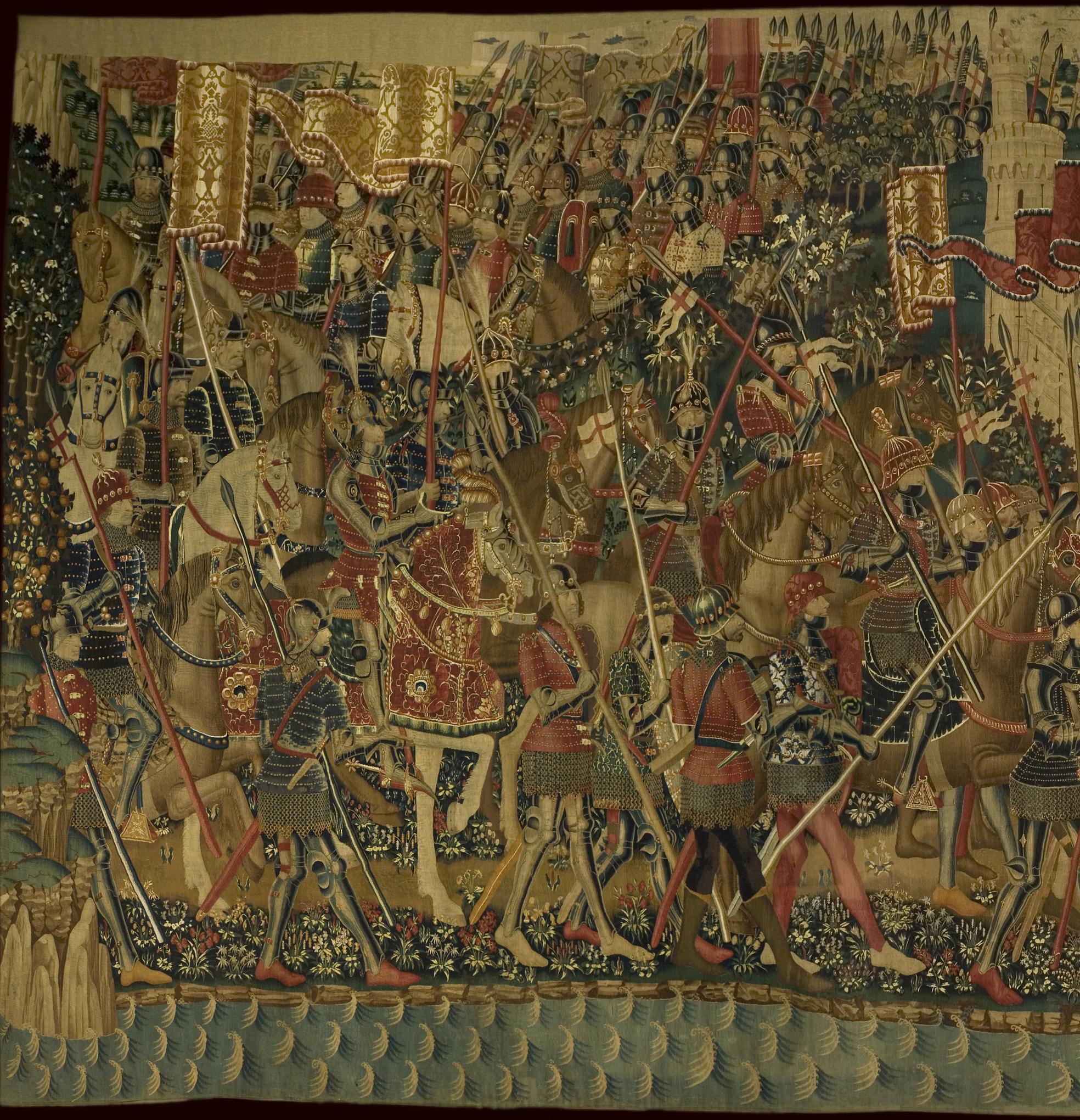
Create an Amazon Business Account
The Pastrana Tapestries of Alfonso V
Portuguese Conquest of Tangier
Detail of left

Detail of bottom left to centre


The surrender of Tangier and the exit from the city
Following the conquest of Asilah, the Portuguese army marched into the city of Tangier, taking it without a fight on August 28th, 1471 on account of an agreement reached with the lord of Asilah. Despite his defeat, he surrendered the city to the Portuguese in order to continue his fight against the lord of Fes. The tapestry shows the entry of the Portuguese and the exit of the inhabitants of Tangier. On the left we can see the advance of the Portuguese army, arriving at the gates of the town. The middle of the composition is taken by the strongly-defended city and its bay, represented very naïvely and almost in a two-dimensional style, like the rest of nature in this series of four tapestries. Other fortresses appear far away, on the landscape. A soldier waves the coat of arms of Portugal from the top of the walls, and the defeated inhabitants of the city leave it on the right, taking along their belongings. The presence of women and children and the careful representation of Moorish robes are noteworthy.
No king or prince
The absence of the emblem of Alfonso V in this tapestry, the rodizio or cogwheel, indicates that the monarch did not partake in this action, nor did his son Prince John, since their presence was unnecessary given the lack of confrontation. Besides, just a few insignia with St George’s cross are to be seen. Everything in this tapestry contrasts with the rest of the series: the action and hustle of the combat in Asilah yield to the quiet taking of the city of Tangier.
A heroic feat
Nonetheless, this was in no way a less heroic or important action for Portugal. The ancestors of Alfonso V had attempted the conquest of the city on several occasions with no success at all. It was even the case that Ferdinand, commonly known as the Saint Prince, an uncle of the king, died after becoming a prisoner when he tried to take the city in 1448. The triumph of Alfonso V favoured the celebration and enhancement of the prestige of the royal dynasty –the House of Aviz– and of Portugal in the European context of the time.